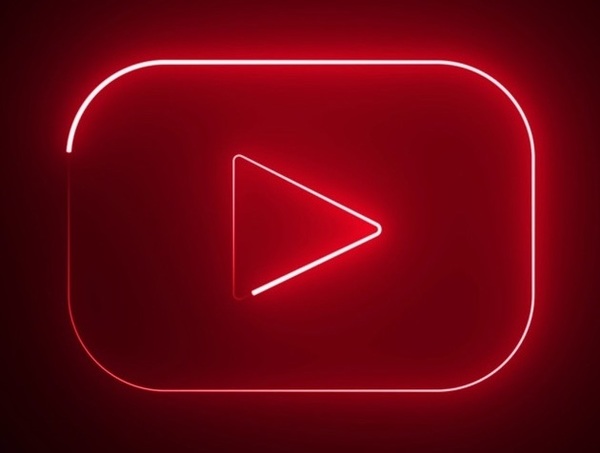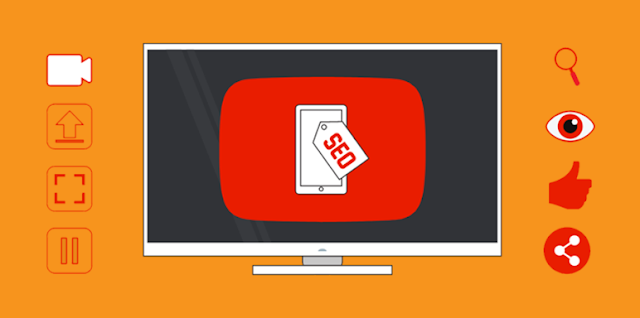
In terms of being able to generate free publicity and generating free traffic, YouTube is king among social media sites. You’ve probably seen the statistics. YouTube has 2 billion users and 5 billion videos are viewed on a daily basis. It might seem like it’s an impossible challenge to wade your way through all that clutter to get significant numbers of views, but it’s not as hard as it looks. The audience size is going to be significantly narrowed, and by focusing on the right keywords (called tags on YouTube) and producing quality content, you can quickly grow your channel.
YouTube also offers the prospect of advertising, and advertising on YouTube is dirt cheap. Advertising can help grow your video views as well.
In my view, YouTube stands out as a preferred social media site. It’s probably the best site for driving free traffic once you get the hang of learning how to make videos, how to get them found on the site, and how to encourage people to look at them. Patience is a virtue. Don’t think that you have to make perfect videos right out of the gate. As they say, practice makes perfect, so you can keep making videos until they are good. You can always go back and delete videos that aren’t working for you later on.
Making Quality Content
The first step to success with YouTube is to make quality content that people are going to enjoy watching. With all the options that people have today, making a second or third-rate video isn’t going to cut it. But the good news is you don’t have to hire an advertising agency to shoot a professional video for you, although you can do that if you want to. Simple, straightforward videos actually work very well on YouTube. Some of the most popular videos are made by people simply speaking into their mobile phone using the Facetime camera to film themselves. As long as you are providing good content and can deliver it halfway decently, people will be interested in watching.
Another method that can work very well is to simply narrate a Keynote or Powerpoint Presentation and export that as a video. As long as the slides are good and contain good information, that type of video can work pretty well. People tend to like faster pace these days, so you can hold people’s attention better by presenting small bytes of information quickly. So, rather than packing in five minutes of material into a single slide, it would be better to have five slides of one minute each or even ten slides that were 30 seconds each.
It can be helpful to have an image of yourself talking that is displayed in the lower right corner of the screen. One thing that really helps on YouTube is a personal touch, which is why videos of people just talking into the camera are so effective. This comes down to the natural human need to trust, especially when it comes to online marketing when people are trying to trust someone that they are only going to know through the computer. Letting them see you and hear you talk are going to go a long way toward pushing those trust buttons.
Don’t worry about looking like a movie star or having the perfect voice. As you browse the site, you’ll see that thousands of video creators are neither movie stars nor perfect speakers, but they have large followings. All you need is to have a fairly decent, clean appearance and an ability to speak clearly. It can help if you can go through presentations at a faster clip, but that isn’t critical. Don’t be afraid to put yourself on your videos. All else being equal, a video with a speaker who is upfront and in front of the camera is going to outperform one where the speaker tries to avoid showing themselves.
The worse kinds of videos are those that have no speaking at all or use a computer-generated voice. Using a computer-generated voice in place of your own is an instant turnoff, and people are far less likely to stick around to watch your video to completion. It’s also bad to have an instructional video that either shows how to do something on the computer or shows slides, but that plays music rather than having a speaker. That communicates that you are afraid to narrate the video. It’s not a strong selling point for a marketer.
One way to get started is to find out what people in your niche are already doing. So, spend some time just browsing on YouTube and find the top videos in your niche. Look for high like-to-dislike ratios and high view counts on videos. The goal isn’t to copy but to see what type of style seems to work best in your niche. It may turn out that many different ways of making videos are effective in getting a large number of views for your particular niche or one method or another might stand out.
As with anything else, don’t copy anyone directly. But you can use the template of what makes a successful video in your niche, and then use that to make your own videos. If you find that there are different types of videos that all seem to generate large numbers of views, then you can pick the style you are most comfortable with.

Dedicate a YouTube Account to Your Business
It’s not good to mix things on YouTube. You are better off if you create an account specifically for your business. Don’t mix up topics on the account; you want everything focused on the niche your business is in. Having people watch a video and then clicking on your account to see what else you offer on the topic but seeing funny cat videos is not going to help. If you are in business across different niches, then create multiple accounts. Also, keep a wall between your personal account and your business accounts. Everything needs to be narrowly focused and tailored to a specific audience.
SEO for Videos
Second to making a good video, getting it found is one of the most important tasks. That means you need to take certain steps when creating your videos so that users can find them. The first step in this process is keyword research. You can use Google Keyword Planner to help find long-tail keywords for your niche. A long-tail keyword is a phrase rather than a well-known top keyword that has a lower search volume. For example, social media is a main or top keyword (a keyword can be a phrase). We can create a more long-tail version by adding more information to it, so social media marketing is long-tail as compared to social media, but it probably still has a lot of traffic.
We could instead use phrases like social media marketing for YouTube or social media marketing for small business. Those are long-tail keywords. Typically, long-tail keywords have traffic but less traffic than the main or top keywords. But they are also less competitive, so it’s easier to use them to drive traffic to your own sites.
Of course, 1,000 people might be searching for a popular keyword, but there might be thousands of videos that use it, so it would be difficult for a new video to rise to the top where it’s actually going to get views. On the other hand, maybe only 100 people are searching for long-tail keywords. But think about it – you can use ten long-tail keywords to add up to the same traffic as the main keyword, but in this case, your videos can rank high for all ten keywords. That will end up driving a lot of traffic to your YouTube channel.
Using Your Keyword
The first step when it comes to using your keyword is to make a video about that specific keyword. Then, you’re going to want to use the exact keyword phrase as a part of the video title. Make sure it sounds natural. YouTube has a description that comes with every video. You should also use the keyword two to three times in the description. Again, make sure that it sounds natural. Finally, you want to enter the keyword as one of your video tags.

VidIQ
VidIQ is a web plugin for web browsers on a desktop computer. They have a free version that can be extremely helpful for YouTube. It can be used in two ways. The first way is in finding out what other people are doing. In short, VidIQ is going to tell you the video tags that someone else is using. So, you can locate videos in your niche that have a large number of views, and then spy on them to see what tags they are using.
Outside of the keyword, you have selected for your video to be centered on, you can use the tags that you see other people are using to help drive traffic. VidIQ will also analyze your videos when you are creating them and offer suggestions. It will make sure that you are using your main keyword in the title and description, as well as placing it in the video tags, all three of which are essential.
Use Maximum Tags
Many naïve YouTube creators only use a small number of video tags. That makes their videos harder to find. Don’t be one of those people – use the maximum allotted space. You also want to use your description to help drive traffic. So, write a decent-sized description that contains relevant text for the video topic. Just make sure that everything sounds natural. You don’t want to come across as someone who is trying to stuff keywords into their description.
Remember that Google indexes YouTube videos, and they often show at the top of search results. You are going to want to develop your videos with that in the back of your mind. Being able to show up in Google search is going to add an extra layer of help in driving traffic to your video.
Good Thumbnail
Having a good thumbnail is an important part of driving video views. If you notice on YouTube searches, people who are good at this have thumbnails that stand out. You want to include highly readable text on your thumbnail so that you can draw the immediate attention of viewers who are interested in the topic of your video. The best thing to do when starting out is to observe what other people are doing, and then do the same thing yourself.
The importance of a good thumbnail can’t be underestimated. A lot of people make goofy looking thumbnails that actually result in a very high level of views. But it’s not the goofiness that does it. If you look for one standout characteristic of winning thumbnails is that they have overlaid text that clearly describes what the video is about. That is a great way to grab someone’s attention and get them to at least give the video a try.

Link to Your Sites
The YouTube description field provides an important opportunity. The first is backlinking to your website and blog. You can include links to your blog and to a landing page on your website in the description. You will want to put these at the top of the description so that people can readily see them and be inclined to click on them. You can also use your YouTube videos to drive traffic to your Facebook page.
Regular Posting
It’s important to make videos on a regular basis. It’s the same dynamic, as it is on other social media platforms. If you make one video and don’t come back for a while, that video might get a lot of views, but you aren’t going to be building and growing a fan base. You should try and put up 1-2 videos per week. That way, you can start driving organic traffic that can go to your website. The more videos the better, quite frankly. But like anything else, don’t overdo it for the sake of posting. If you post five videos and only one is worth watching, it’s not going to help you build a reliable fan base.
Integration
If you do nothing more than use a blog, Facebook, Instagram, and YouTube, you are going to have all the social media presence that you need. One important tip is to do integration across platforms. Instagram is a special case, so I’m going to leave it out here, but one thing you want to be doing is connecting your YouTube channel and your Facebook page together. Facebook provides a way to integrate a YouTube channel so that you can do it automatically. At the very least, you should grab a link to each video you post on YouTube, and then post them on your Facebook page.
You should also be using your YouTube channel to provide content for your blog. You can use a YouTube video in a blog post in addition to linking to the blog from your YouTube channel. This kind of cross-linking is extremely beneficial. You want to create an interlinked web of your content online so that you are helping improve your rankings in search engines, and so that customers can follow through the connections to get engaged with all of the different content you have online.
Someone who watches a YouTube video that is interested enough in clicking through to your blog might sign up to join your blog or email newsletter. And vice versa, someone who views a YouTube video on your blog might click through it to see what other YouTube videos you have, and they may become a subscriber. The interlinking will also help users share your content and bring even more users to your sites.
Respond to Comments
Actively engaging your audience is going to help you build up the number of viewers over time. If someone asks a question in the comments, be sure to jump on the site and answer it publicly. You want to show viewers that you are active, helpful, and engaged. If you get a huge number of comments, you don’t have to spend all day answering them all, but you should answer a few select questions. It’s also helpful to post your own comment immediately after posting the video live. You can remind people to visit your blog for more information and check out other links and so on.
Ask Questions
That helps drive user engagement. You want to start creating a sense of “community” around your videos, and asking a question will prompt more people to leave comments. This can create a snowball type effect where more people are leaving comments in response to the conversation.
Use Series and Playlists
Your channel can be more valuable if you create playlists of related videos. That makes it easier for viewers to find relevant information they may be looking for. It also helps organize different topics that might be related to your niche. A clean YouTube channel with playlists that target specific sub-niches is going to work better than one with hundreds of videos that aren’t organized.
Ask for Subscribers
A common practice is to ask viewers to subscribe to the channel. You can do this at the beginning or at the very end of each video that you submit, but the beginning is more effective because many viewers don’t watch all the way through. When you get subscribers, people will receive an inbox notification that you have posted a new video. Getting repeat viewers is a good step along the road toward converting them into paying customers.
Calls-to-Action
You can add a call-to-action like an end card to your video that asks users to take specific actions. You can also suggest these inside the video, telling the user exactly what steps to take. For example, you can tell them to click on the description link to read more on your blog or invite them to sign up for your email list. When you make videos if you don’t have a specific product to promote, you should at least include a link to your landing page below the video and invite viewers to sign up.
YouTube Advertising
You can do a lot with free YouTube traffic, and if that’s all that you do with YouTube, as long as you’re doing a good job with it, that might be all that you need. However, advertising on YouTube is always a good option. The first thing to note about advertising on YouTube is that it’s very cheap. You can reach more people with it than you can on Facebook and at lower prices. For a few dollars a day, you can be driving thousands of viewers.
The first step to advertising on YouTube is to make a video. The video is just one that you upload to your account. You can use a video you’ve already made, but you are probably going to make one that makes a specific pitch. Like on Facebook, you can use a YouTube ad to drive traffic to a free offer and email signup form. With that in mind, you are probably going to want to make a video that describes your free offer and tells the viewer what the benefits are of receiving the free offer.
Make sure you’ve got your links in the description of the video when you create the ad. The system is also going to ask you for a destination link. YouTube ads can be shown by category, and so forth. Basically, randomly by the system. However, you can also target specific YouTube channels and videos. So, if there is a video in your niche that gets a large number of views, you can have your YouTube ad show on that video before it plays. Assuming that you have chosen wisely and that the video is directly related to what you are promoting, this can be very helpful in getting high conversion rates.

Share Your Videos and Go Viral
The first two steps to getting your video to go viral are having a good video and setting up the right keywords. You can also share your video to help it go viral. You don’t have to make it go viral yourself. The goal is simply to get the ball rolling. Be sure to post it on your accounts across social media sites. If it’s relevant, you can share the video with your email list. That is a good option because it lets them do all the heavy lifting for you. Of course, it’s essential that you post videos on your Facebook page and on your blog.
Don’t shy away from paid promotion, however. If you are in business to make money, you’re going to have to use a paid promotion at some point to make sure that you are driving adequate levels of traffic in order to profit from your business.

